Audi Urban Future Award: Building a vision - 2030
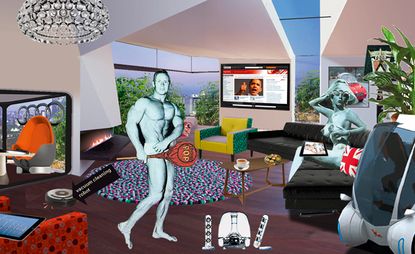
Cars and architecture are going to have to get to know one another rather better. Truly green mobility will depend on a massive supportive infrastructure in order to realise its full potential; charge points, specialist filling stations, more space efficient parking, intersection with public transport, congestion charging, etc. With all this in mind, Audi has taken the initiative and asked six international architects to conceive a city landscape for 2030 to examine how urban planning and architecture will change to embrace sustainable mobility.
The German marque hopes the findings will help shape its eco vision (as well as allow it to steal a march on its rivals). 'For me cars are like urban furniture,' head of Audi Group Design Wolfgang Egger told us following the initial presentations at the Royal Institute of British Architects in London. 'What we as car designers would like to find out is how to continue with individual mobility in a future urban environment.'
The architects involved are a well picked mix of practices from around the world -- Wallpaper* favourites all - including Alison Brooks Architects (London), BIG (Copenhagen), Cloud 9 (Barcelona), Diller Scofidio + Renfro (New York), J. Mayer H. Architects (Berlin) and Standardarchitecture (Beijing).
Independently, the dominant theme is the integration of personal mobility with public and shared transport, with a notable emphasis on exploring sophisticated information technology systems to expand on the role of the car. BIG conceives of a future city dominated by automated mobility - the driverless car changing the dynamics of the urban space. Founder Bjarke Ingels had this to say: 'The driverless car will change not only the way we utilise our existing physical environment, but how we plan for new urban life forms. Urban space and urban movement co-evolve in a constant feedback loop where each part is evolving to adjust to the other.'
Alison Brooks suggests downsizing the car to reclaim urban land taken up by roads and parking. 'Defuse vehicles around buildings like movable pods and use energy-producing buildings as power sources.' She also proposes personalised removable control systems so that the vehicle becomes a mobile architectural space.
Berlin firm J. Mayer H clearly had a similar vision. Jurgen Mayer told us: 'Individual mobility of the future will strongly be linked to the developments of digitally augmented urban spaces, automated driving and personalised data exchange between the human body and its environment.'
Standardarchitecture is focusing on how Beijing might appear in 2030. The firm has divided the city into two, with controlled interior and exterior mobility. Outside electric cars will be the primary means of travel, inside electric cycles and 'Audi Bubbles' - a small personally adapted space that travels on and between the travel belts. All this will coexist alongside a supporting metro system. 'New patterns of urbanisation will change our concept of mobility, and the change in our mobility concept will drastically change the future of the city,' Standardarchitecture founder Zhang Ke told us.
Wallpaper* Newsletter
Receive our daily digest of inspiration, escapism and design stories from around the world direct to your inbox
Cloud 9, for instance, set out to design its own concept car. Called Barcelona's Empathic Car it absorbs energy from various sources including a possible crash. The founder of the Barcelona practice, Enric Ruiz-Geli, explained: 'We would like to imagine a soft skin with photovoltaic dots which contribute to the energy production.'
Audi board member Rupert Stadler thought it interesting that most of the architects addressed personal mobility, confirming for him that the car as an object is here to stay. Following the presentation, he told us that the marque has no plans for a zero-emission sub brand but that the next stage for Audi will be small volume electric vehicles under the e-tron badge. He explained: 'We are branding the technology for electric driving as e-tron -- a bit like we did with the quattro.'
The six architects have now entered phase two. Audi will award the winner €100,000, to be presented in August at the 12th International Architecture Exhibition at the Venice Biennale, where each practice will produce an installation that represents their concept of a transformed reality.
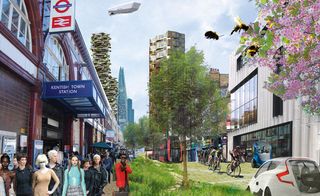
Alison Brooks suggests downsizing the car to reclaim urban land taken up by roads...

.. and parking by taking personal micro cars up elevators, or plugging them onto the sides of houses
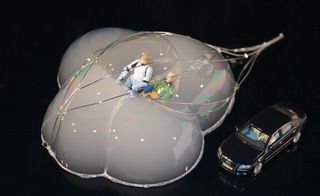
Cloud 9 worked with eight to 10-year-olds in a workshop for the Barcelona’s Empathic Car project
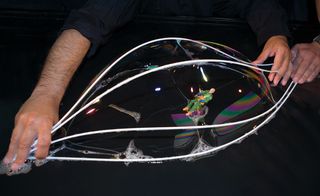
Cloud 9 was inspired by Media ICT, a bubble building where a membrane protects the building from the sun’s radiation
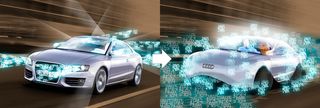
A.Way by Jurgen Mayer H.
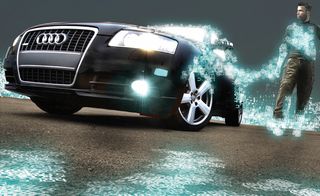
According to J. Mayer. H, individual future mobility will be linked to the developments of digitally augmented urban spaces, automated driving and personalised data exchange between the human body and its environment...
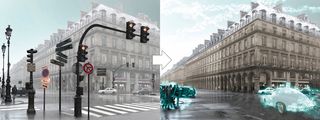
Traffic will be a constant flow, with no more need for parked vehicles
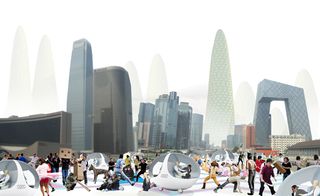
Standardarchitecture’s vision for Beijing in 2030 divides the city into interior and exterior mobility...

... Outside, electric cars will be the primary means of travel, whereas on and within the travel belts, electric cycles and ‘Audi Bubbles’ will be the forms of mobility, coexisting with the old supporting metro
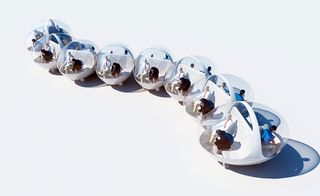
Audi Bubbles are small personally adapted spaces that travel on and between the travel belts
-
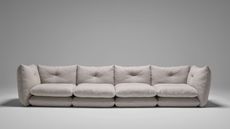 Knoll presents Willo Perron sofa at Salone del Mobile 2024, 'a piece that can stay with you forever'
Knoll presents Willo Perron sofa at Salone del Mobile 2024, 'a piece that can stay with you forever'Salone del Mobile 2024: the ‘Pillo’ sofa by Willo Perron for Knoll is the California-based designer’s first piece for the American brand, prioritising comfort and timeless usability
By Rosa Bertoli Published
-
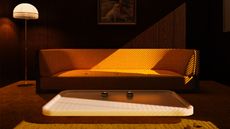 Nuova wants to 'bring time travel to the world' with their debut at Milan Design Week
Nuova wants to 'bring time travel to the world' with their debut at Milan Design WeekCalifornian design studio Nuova has been working behind closed doors for some of the biggest names in luxury and tech. The studio makes its public debut at Milan Design Week 2024, and take visitors on a journey back to 1971
By Laura May Todd Published
-
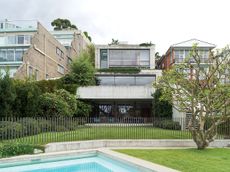 Lavender Bay house opens towards the water, overlooking Sydney harbour
Lavender Bay house opens towards the water, overlooking Sydney harbourLavender Bay house by Tobias Partners is an expansive family home overlooking Sydney harbour
By Ellie Stathaki Published
-
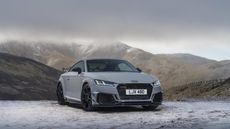 Farewell to the Audi TT, a design icon that evolved with the automotive landscape
Farewell to the Audi TT, a design icon that evolved with the automotive landscapeFor over 25 years, the Audi TT has been synonymous with the brand, a modern machine that initially favoured style over sport. The final editions are very different beasts to the original
By Jonathan Bell Published
-
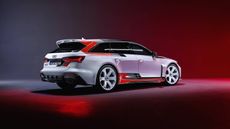 Audi RS6 Avant GT is an estate car that thinks it belongs on the track
Audi RS6 Avant GT is an estate car that thinks it belongs on the trackWith the Audi RS6 Avant GT limited-edition supercar, Audi Sport has gone all-out to create the ultimate hyper-estate
By Jonathan Bell Published
-
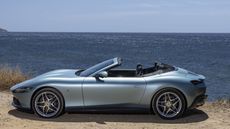 Year in review: the top 10 cars of 2023, as selected by Wallpaper’s Jonathan Bell
Year in review: the top 10 cars of 2023, as selected by Wallpaper’s Jonathan BellWhat were the best four-wheeled offerings of 2023? Transport editor Jonathan Bell takes us through the year’s most intriguing automobiles
By Jonathan Bell Published
-
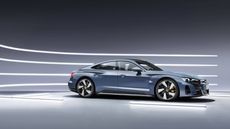 Audi e-tron GT quattro still pushes all the right buttons. But what happens next?
Audi e-tron GT quattro still pushes all the right buttons. But what happens next?Life behind the wheel of Audi’s elegant electric GT, plus a short history of the company’s e-tron series, from concept through to production
By Jonathan Bell Published
-
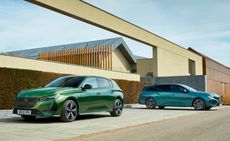 Peugeot’s sparky 308 gets hybrid power and handsome lines
Peugeot’s sparky 308 gets hybrid power and handsome linesThe Peugeot 308 proves that mass-market design needn’t be dull, blending hybrid power with sharp lines and excellent detailing
By Jonathan Bell Published
-
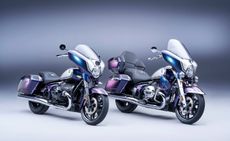 BMW Motorrad brings out the big guns for its newest cruisers
BMW Motorrad brings out the big guns for its newest cruisersBMW Motorrad R 18 Bagger and Transcontinental set the tone for high-voltage cruising with a brand collaboration with speaker specialist Marshall
By George Chapman Last updated
-
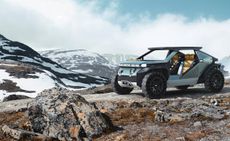 Dacia’s new Manifesto concept is a true outdoor utility vehicle
Dacia’s new Manifesto concept is a true outdoor utility vehicleUtilitarian auto brand Dacia sets a bold new agenda with its Manifesto, a concept car pitched at the active outdoor market
By Jonathan Bell Last updated
-
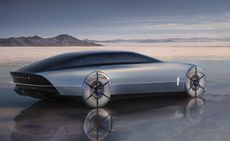 The sun sets on traditional supercars at California’s Monterey Car Week
The sun sets on traditional supercars at California’s Monterey Car WeekMonterey Car Week, the world’s most prestigious car gathering, is showcasing ever-more extravagant special editions, coachbuilt cars and all-new electric concepts. Here are seven key machines from 2022
By Rory FH Smith Last updated